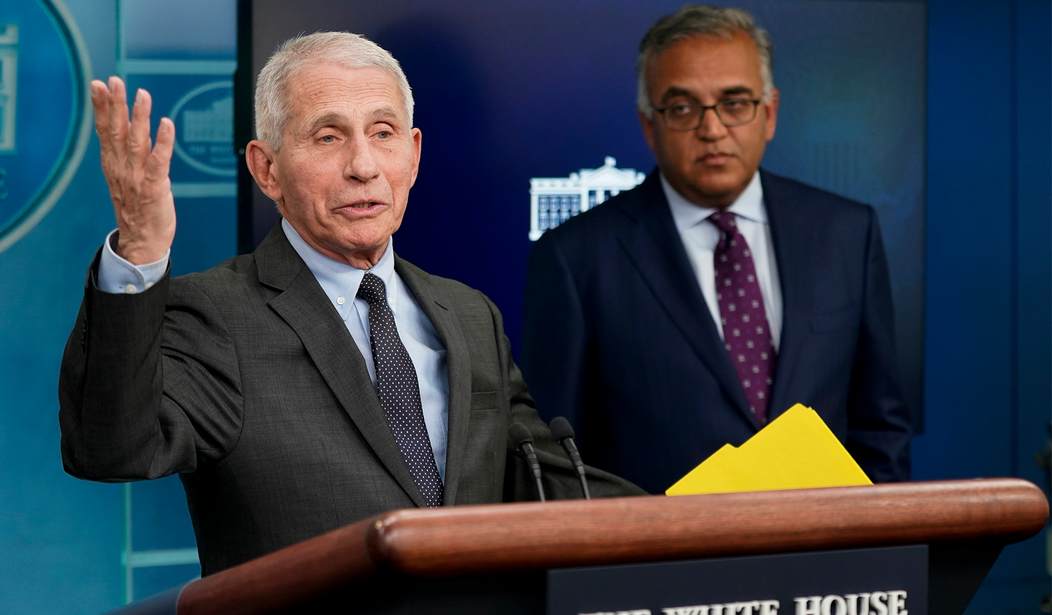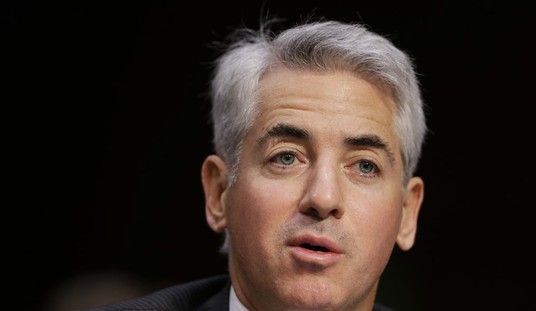Last week, Dr. Anthony Fauci spoke at what many of us fervently pray is his last official press conference. After botching the HIV epidemic in ways that are part of the public record, Fauci was allowed to bring Covid tyranny down on much of the nation in the name of “public health” for over two years. He achieved this by encouraging containment measures never used in modern history and gaslighting America about everything from cloth masks to the efficacy of experimental vaccines.
So, it is only fitting that he ended his leadership of the Covid response by lying to Americans again. During the presser, he said:
If you look at the data, they are just profoundly striking of the curves of death and hospitalization of vaccinated and unvaccinated versus vaccinated and boosted. So there is a relatively smaller difference in vaccinated and unboosted versus vaccinated plus boosted. That doesn’t mean you shouldn’t get boosted. But the real danger is in the people who have not been vaccinated. That’s where we expect if we are going to see a problem this winter, it’s gonna be among those people.
The data say no such thing, and even the Washington Post acknowledges it. In April, “The Health 202” newsletter from the paper noted that a growing percentage of Americans dying from Covid were vaccinated:
- Vaccinated people made up 42 percent of fatalities when the omicron variant was surging in January and February.
- That’s compared with September, when vaccinated people comprised just 23 percent of deaths during delta’s peak.
- The bulk of vaccinated deaths were concentrated in people who hadn’t gotten boosted.
Of course, the analysis was based on CDC data that, as Dr. Marty Makary once said, would not pass muster at a 7th-grade science fair. In the assessment above, anyone with a passing familiarity with statistics and Covid could come up with a dozen confounding variables. For one, are these deaths from Covid or with Covid based on an incidental test? The CDC data never differentiated between the two.
Recommended: Biden’s Crushing Inflation Spikes Household Credit Card Debt to New Heights
However, since the CDC data have been garbage in and garbage out throughout the pandemic, it is fair to compare the date at different points in time. And the WaPo newsletter did. On the same day that Dr. Fauci made his final speech from the podium, “The Health 202” newsletter proclaimed that vaccinated people now make up a majority of Covid deaths:
It’s no longer a pandemic of the unvaccinated
For the first time, a majority of Americans dying from the coronavirus received at least the primary series of the vaccine.
Fifty-eight percent of coronavirus deaths in August were people who were vaccinated or boosted, according to an analysis conducted for The Health 202 by Cynthia Cox, vice president at the Kaiser Family Foundation.
It’s a continuation of a troubling trend that has emerged over the past year. As vaccination rates have increased and new variants appeared, the share of deaths of people who were vaccinated has been steadily rising. In September 2021, vaccinated people made up just 23 percent of coronavirus fatalities. In January and February this year, it was up to 42 percent, per our colleagues Fenit Nirappil and Dan Keating.
“We can no longer say this is a pandemic of the unvaccinated,” Cox told The Health 202.
Predictably, the newsletter then moves the goalposts and implies it is now a pandemic of the unboosted. It quotes Dr. Fauci at the press conference saying, “The final message I give you from this podium is that please, for your own safety, for that of your family, get your updated covid-19 shot as soon as you’re eligible.” This is from the man who was vaccinated, received multiple boosters, caught Covid, and took Paxlovid. Then, like almost every other public figure after Paxlovid was approved, Fauci got a rebound case worse than his initial symptoms. But please take his advice.
Here’s the other little secret. The new bivalent booster may already be outdated. The initial vaccines built immunity to an ancient spike protein from the Wuhan variant. The bivalents are based on the spike of the Omicron BA.4 and BA.5 variants and the Wuhan variant. Omicron has moved on to the BQ1 and BQ1.1 variants.
In October, Fauci told CBS News that the new variants had “qualities or characteristics that could evade some of the interventions we have.” The only interventions Fauci recognizes are vaccines, remdesivir, and Paxlovid. So, precisely which ones can the new variants evade? He never said. Fauci added, “When you get variants like that, you look at what their rate of increase is as a relative proportion of the variants, and this has a pretty troublesome doubling time.” BQ1 and BQ1.1 now make up the majority of Covid cases.
So how is it all working out? On Wednesday, the CDC published a study on the effectiveness of the bivalent vaccines. Only 24% of 121,687 patients who tested positive were unvaccinated. Seventy-two percent had received between two and four of the original vaccines, and 5% took the new Omicron version. Because this is the percentage of the total population, you can compare them to the group that tested negative. Among 238,939 patients who received negative test results, 30% reported being unvaccinated, 63% had received two, three, or four of the original vaccine doses, and 7% had received a bivalent booster dose.
Related: Canadian Government Pushes Psychiatric Medication for ‘Vaccine-Hesitant’
The authors went through some amazing contortions to present this as good news. However, as the same student of basic statistics could tell you, the notable finding in this comparison is the higher percentage of unvaccinated individuals who tested negative, and the higher rate of the vaccinated who tested positive. The two percent difference in people receiving the new bivalent hardly seems impressive when the authors note the following:
Median interval between receipt of the bivalent booster dose and SARS-CoV-2 testing was 1 month (range = 0–2 months) and did not vary by case status. Self-reported infection >90 days before the current test was more common among persons who received a negative test result (43%) than among those who received a positive test result (22%).
To summarize, when a person received the new vaccine had no bearing on whether or not they got sick. Further, the longest time interval is two months after bivalent vaccination. It is well documented that the original vaccines begin to wane between 60 and 90 days, and the bivalent is the same technology. However, it appears an infection in the last 90 days made quite a big difference. It would have been even more interesting to know who had had an infection since the pandemic started. But that is the question the “experts” don’t want to know the answer to.










Join the conversation as a VIP Member